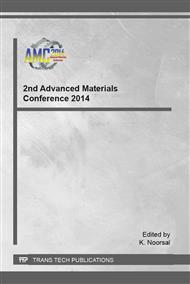p.216
p.221
p.226
p.231
p.236
p.241
p.249
p.254
p.259
Rheological Properties and Extrusion Performance Evaluation of Silica Filled Epoxidized Natural Rubber (ENR) Compounds as Compared to Natural Rubber/Butadiene Rubber (NR/BR) Compound
Abstract:
In tyre industries, rheological and processability properties of rubber and polymer are great of importance since there are alot extrusion processes involved in the tyre manufacturing other than calendaring and moulding processes. Uniformity and consistency in the flow behaviour and processability of rubber are essential in providing the solution to the rubber industries in order to improve productivity, products quality and energy conservation. In this works, effects of silane coupling agent on rheological behaviour and extrusion performance of silica filled ENR tread compounds were studied and compared to NR/BR tread compound. The compounds were prepared by melt mixing in tangential internal mixer, while the rheological properties of compounds were determined by Capillary Rheometer, Cure Rheometer and Mooney viscometer. The compound were further examined for its extrudability performance evaluation by extruded the rubber through 30mm cold feed extruder machine using ASTM Extrusion Die, ‘Garvey’ type. Results showed that, ENR/silica compounds exhibit higher shear viscosity curves as compared to NR/BR compound at low shear rate regime. However an opposite trend was observed towards high shear rate regime tested which ENR/silica compounds gave slightly lower shear viscosity curve compared to NR/BR compound. As for extrudability performance evaluation, NR/BR compound gave better extrusion characteristics and appearance as compared to ENR/silica compounds.
Info:
Periodical:
Pages:
236-240
Citation:
Online since:
January 2016
Keywords:
Price:
Сopyright:
© 2016 Trans Tech Publications Ltd. All Rights Reserved
Share:
Citation:


